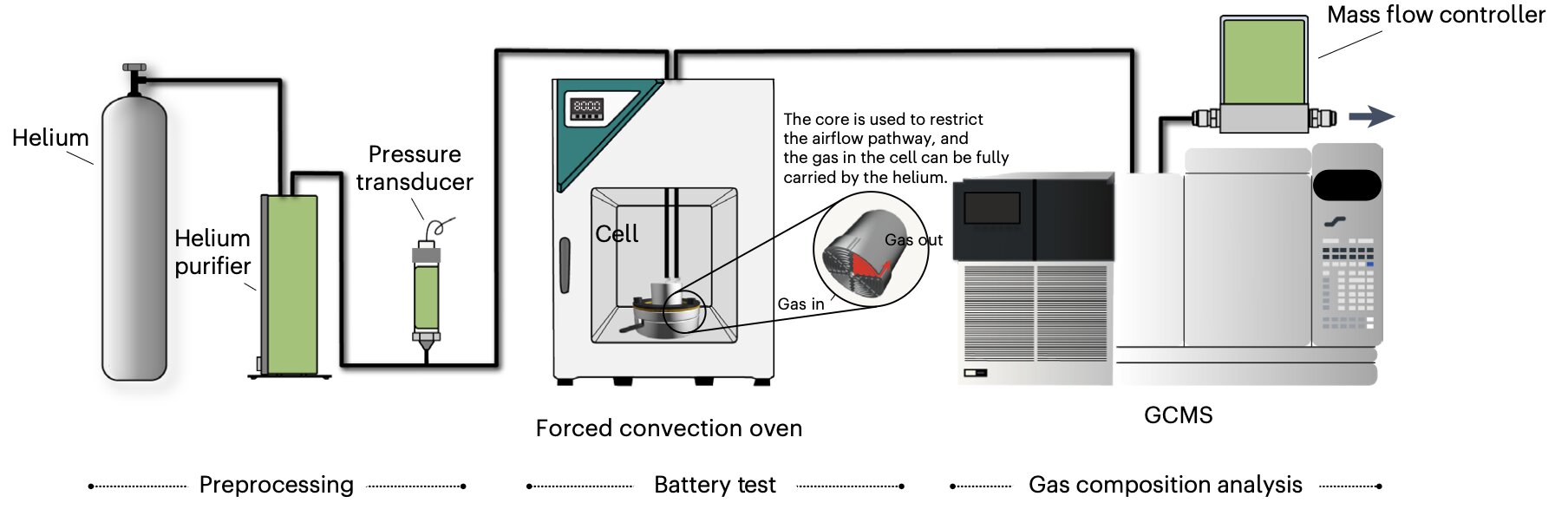Tech
Isotropic MOF coating reduces side reactions to boost stability of solid-state Na batteries

In recent years, energy engineers have been trying to design new reliable batteries that can store more energy and allow electronics to operate for longer periods of time before they need to be charged. Some of the most promising among these newly developed batteries are solid-state batteries, which contain solid electrolytes instead of liquid ones.
Compared to batteries with liquid electrolytes that are widely used today, solid-state batteries could exhibit higher energy densities (i.e., could store more energy) and longer lifetimes. However, many of these batteries have been found to be unstable, due to unwanted chemical reactions that occur between their high-voltage cathodes (i.e., positive electrodes) and solid electrolytes, which can speed up the degradation of the batteries’ performance over time.
These undesirable side reactions are particularly common in sodium-ion (Na+) solid-state batteries, which use Na+ ions to store and release electrical energy. This is because while Na is more abundant and cheaper than lithium, Na-ion batteries are inherently more chemically reactive than Li-ion batteries.
Researchers at the Chinese Academy of Sciences recently introduced a promising strategy to increase the durability and performance of solid-state Na-based solid-state batteries, by minimizing side reactions between their underlying cathodes and solid electrolytes. This strategy, outlined in a paper published in Nature Energy, entails the growth of a dense metal-organic framework (MOF) layer on the surface of high-voltage cathodes, which could prevent them from reacting with solid electrolytes.
“Side reactions between high-voltage cathodes and electrolytes remain a critical obstacle to the advancement of solid-state batteries—particularly for Na-ion systems—due to the higher Na+/Na redox potential,” wrote Yuan Liu, Huican Mao and their colleagues in their paper.
“Despite recent extensive efforts, achieving a long cycle life is still challenging at the 4.2 V cut-off (versus Na+/Na). We design a room-temperature isotropic epitaxial growth to achieve a relatively uniform and dense metal–organic framework epilayer on Na3V2O2(PO4)2F surfaces.”
To assess the potential of their approach, the researchers grew a uniform MOF coating on Na₃V₂O₂(PO₄)₂F cathodes via a process known as room-temperature isotropic epitaxial growth. They then created a solid-state battery, pairing this coated electrode with a solid electrolyte based on the polymer polyethylene oxide.
“Despite using polyethylene oxide, a typical ether-based solid polymer electrolyte, the cathode with isotropic epilayer exhibits enhanced cycling performance at the 4.2 V cut-off (retaining up to 77.9% of its initial capacity after 1,500 cycles),” wrote the authors.
“Combining experimental measurements and theoretical analyses, the key factor governing isotropic epitaxial growth behavior is explicitly elucidated. Furthermore, we develop a self-designed high-sensitivity characterization method, in situ linear sweep voltammetry coupled with gas chromatography–mass spectrometry, to elucidate the failure mechanism of polyethylene oxide on Na3V2O2(PO4)2F surfaces and to reveal the excellent electrochemical stability of the isotropic epilayer.”
In initial tests, solid-state batteries based on the team’s coated cathode material were found to perform remarkably well, exhibiting significantly fewer side reactions between the cathode and electrolyte. Notably, the strategy they employed could also be applied to other cathodes and batteries with different compositions.
Other researchers could soon draw inspiration from this study and employ similar strategies to stabilize other Na-based solid-state batteries. In the future, the isotropic epitaxial method developed by Liu, Mao and their colleagues could ultimately contribute to the large-scale deployment of durable and reliable solid-state batteries with high-energy densities.
Written for you by our author Ingrid Fadelli, edited by Gaby Clark, and fact-checked and reviewed by Robert Egan—this article is the result of careful human work. We rely on readers like you to keep independent science journalism alive.
If this reporting matters to you,
please consider a donation (especially monthly).
You’ll get an ad-free account as a thank-you.
More information:
Yuan Liu et al, Designing an isotropic epilayer for stable 4.2 V solid-state Na batteries, Nature Energy (2025). DOI: 10.1038/s41560-025-01857-y.
© 2025 Science X Network
Citation:
Isotropic MOF coating reduces side reactions to boost stability of solid-state Na batteries (2025, October 24)
retrieved 24 October 2025
from https://techxplore.com/news/2025-10-isotropic-mof-coating-side-reactions.html
This document is subject to copyright. Apart from any fair dealing for the purpose of private study or research, no
part may be reproduced without the written permission. The content is provided for information purposes only.
Tech
We Found the Permanent Outdoor Lights Worth Putting on Your Home

Weatherproofing. Every model needs a weatherproof rating to survive outside, so if you don’t see one, don’t buy it. There’s usually a lower rating for the control box compared to the rest of the lights, so be sure you can put that somewhere that’s a little less exposed to the elements. (As mentioned above, make sure you have an outdoor outlet, and check if there’s only one on a certain side of your home in case it limits your installation options.)
A range of installation options. You’ll want a set that comes with plenty of options for your own installation, including adhesive and drilled mounting options. What you need will vary based on your home design and materials; e.g., you’ll want adhesive for homes you can’t drill into. WIRED reviewer Kat Merck, who tested a couple different permanent lights, especially liked sets that had holders you screw onto your home that the puck-style permanent lights can slide onto.
Controls for individual lights. This should be a no-brainer, but some cheaper lights won’t give you this ability or have more roadblocks for customized control. Make sure you’ll have easy individual controls, or you might find yourself frustrated with the design results of these lights. It’s similar to design controls that you’d see on smart bulbs and smart string lights.
A great app. This goes hand in hand with the need for individual light control—a good app determines whether that and other features are accessible. Govee and Eufy, two of our favorite permanent outdoor lights we’ve tried, both have good apps that are easy to use and come with preloaded designs. These tech companies make more than just outdoor lights and make other favorite gear of ours, so they’re a good brand to trust to make a usable product and app. We also like Lepro’s more affordable lights, though the app had some extra hoops to jump through to get to controls, while Lumary’s app was a brutal experience for our tester.
Our Favorite Permanent Outdoor Lights
We’ve tested a handful of permanent lights on different homes, and have a few clear favorites. These options are all ones we recommend, provided your home exterior meets the constraints mentioned above.
This model from Govee has been one of our top picks in our smart Christmas lights review for a reason, and it’s still one of our favorite models at this price point for everything you’ll get with it. WIRED reviewer Simon Hill tested the 100-foot string that came with six sections, plus an extension code. He used adhesive and screw clips to secure the light pucks and cables, and found installation easy. This is a set that you can cut and splice, but he says that isn’t a task for the faint of heart. It has an IP67 rating, and an IP65 rating for the control box. The busy companion app has everything you could want within it: color controls, tons of Scenes (Govee’s lighting effects), scheduling abilities, and even a music sync option (though that felt a little gimmicky). There’s Matter support, and Govee can connect to Alexa and Google’s ecosystems for voice control. Simon says he’d like these lights to be closer together and the design to be a little more subtle, as you can see the cords pretty easily.
WIRED reviewer Kat Merck has tested two different sets of permanent outdoor lights on her home, and Eufy’s S4, incorporating RGB with both warm and cool whites, is by far her favorite. She’s found the app incredibly easy to navigate and find the features she wants, from preset holiday scenes (120!) and colors to schedules and brightness adjustments. There’s even an AI feature that lets you create customized light shows based on moods and scenarios. They were relatively easy to install on her home, which has nonstandard architectural features, as this set has extensions and can be cut and spliced. She says the lights aren’t quite as bright as the Lumary Max set below, but the brightness is adjustable. There’s also a radar motion sensor included, which she’s still testing. The Eufy S4 set also works with the Matter protocol, so it will work with Apple, Google, and Alexa’s smart home ecosystems. It’s got a waterproof rating of IP67 like the Govee set above.
Cync, which comes from appliance maker GE, makes affordable smart bulbs and other smart lights I like, so it’s not a huge surprise that I also liked the brand’s Smart Eave Lights. They were easy to install with 3M sticky strips already installed on the individual lights, and since my eaves are out of safe reach on my townhouse, I used the lights on my balcony railing with great success. One piece of the 100-foot set (it comes with four strings, plus an extension) was the perfect length to loop around my 9-foot-long railing. The set quickly connected to the Cync app, and the power cord is nice and long to make it easy to reach wherever your power outlet is. It has a waterproof rating of IP65.
If You Can’t Install Permanent Outdoor Lights
Not every home is a good fit for these types of lights. I haven’t yet found a permanent light set that works with my home, so here’s what I’ve used instead for a similar result.
These lights are photographed on a tree, but they have a weatherproof rating of IP44 (for both the lights and the power supply) to be used outside. I love how much you can customize these lights. You’ll use the app to take a photo of however you’ve set up your lights, whether that’s around the tree, around your balcony’s railing, or along the front of your house, and then you’ll be able to customize the lights and pattern based on how you arranged it. There are tons of fun light designs already in the app, and you can make your own. It’s a good option if you can only do string lights but want smart capabilities. These lights are also compatible with Amazon’s, Google’s, and Apple’s ecosystems. Twinkly also makes an icicle-style smart light string ($110), which I love using outside too; they’re currently hanging above my garage door.
More Outdoor Lights We’ve Tested
- Cync Outdoor Light Strip for $154: I was really hoping this would be a good solution for outdoor lights for my balcony, but this light strip is heavy and tall, and better designed to use to line a yard versus sticking onto the side of a railing. It comes with grass stakes to line it.
- Lepro’s E1 AI for $153 (50 ft): These permanent outdoor lights are completely sold out right now, but they are another more affordable option. However, they aren’t as cheap as Cync and you will have to get around the app’s AI to really get the most out of it.
- Lumary Outdoor Permanent Lights Max ($260 for 105 ft.): Lumary’s lights were frustrating and limiting for our tester. The app wasn’t intuitive or easy to use, and our tester actually had to have the power box replaced after she tried to connect the lights to a different phone. She liked how bright the lights were, and the fact there’s a physical remote, but the app, power box shutdown, and installation limitations compared with other sets (no splicing ability, installation recommended from the left) make this one we’d skip. Lumary has since released an updated version of its outdoor permanent lights, the Permanent Outdoor Lights 2, which includes a completely redesigned app, including the addition of custom-scene saving, but we haven’t tested them yet.
FAQs
What Are the Cons of Permanent Christmas Lights?
The only real downside to permanent Christmas lights, or permanent outdoor lights of any kind, is the cost. These sets usually cost significantly more than a light string, even the smart ones. That’s because they’re designed to last longer on your home, and the more expensive sets allow you to cut and splice the cords to perfectly fit your home instead of dangling strings and extra lights. It’s an investment, but one you can enjoy year-round.
Are Permanent Outdoor Lights Worth It?
Yes, because you’ll install them once and be good to go with every holiday in your future: Christmas! Halloween! Your fave sports team headed to a big championship match! Your kid’s graduation (or your own)! Similar to how smart bulbs can give you so many options inside your home, the possibilities are endless and something you’ll be able to use and enjoy year-round.
How Does WIRED Test Permanent Outdoor Lights? What Happens When We’re Done Testing?
WIRED tests permanent outdoor lights on the homes of our reviewers. We’ve tested these lights on three different homes in separate areas with serious weather: Washington state, Missouri, and Scotland. We’ve also tested a set in the more mild climate of Southern California. We install these on the homes themselves and leave them up for at least a few weeks, if not months and years (depending on performance), to see how they hold up. Our picks remain on our homes for long-term testing, as these lights are supposed to be permanent, and used sets are safely disposed of.
Power up with unlimited access to WIRED. Get best-in-class reporting and exclusive subscriber content that’s too important to ignore. Subscribe Today.
Tech
IT Sustainability Think Tank: Progess in decarbonisation made in 2025, but gaps remain | Computer Weekly

Reflecting on 2025, the path to decarbonising technology is becoming clearer, particularly with the publication of the UK government’s Carbon Budget Delivery Plan and Industrial Strategy policy papers.
More businesses understand the environmental impact of new technologies and there is a more concerted effort to convene capabilities to mitigate environmental consequences and improve the resilience of energy supply chains.
Artificial Intelligence (AI) is still the centre of the conversation, but the question remains as to how we can maximise the benefits of AI while mitigating the environmental consequences of increased dependence on the technology. This is where enabling deep tech companies to scale will be key.
As it stands, AI is responsible for 5-15% of datacentre power use and is expected to grow to 35-50% by 2030. Based on this increase, there are still challenges to solve around sustainable AI, particularly the impact of datacentres and the opportunity to leverage thermal energy to support the UK’s energy supply chain.
At Digital Catapult, we accelerate the practical application of deep tech to equip the UK to be future-ready. This includes delivering necessary interventions and programmes that ensure we take a responsible and sustainable approach to innovation, and address market gaps.
Gaps and opportunities for improvement
While research highlights environmental consequences of new technologies, gaps remain in how these consequences can be communicated to business owners, and how business leaders can in turn mitigate problems further down the line.
Many recognise the need to embrace deep tech innovation and integrate AI into their operations, but don’t yet know how to cut emissions and improve efficiency. In fact, research by Salesforce found that the most pressing challenge for sustainability professionals is a knowledge gap around AI and sustainability, while research from EY found that existing frameworks and legislation “often fall short” in guiding companies on AI-related sustainability.
This knowledge gap remains a pressing challenge for businesses, highlighting an area that must be addressed through appropriate intervention.
Business leaders are currently sitting on a breadth of opportunities to lead the way integrating and applying deep tech innovation while simultaneously decarbonising their operations. At Digital Catapult, we partner with businesses to achieve this, supporting organisations across major sectors and improving industrial supply chain resilience in the process. Research found that businesses that can effectively embrace energy-efficient solutions, leverage AI-optimised datacentres and achieve circularity in their e-waste systems, can reduce energy consumption and the costs that ensue by 40-60% without compromising on performance. This highlights the value of working creatively to solve systemic challenges while also pursuing growth.
The progress being made to drive decarbonisation
One of the best parts of my job is seeing progress across the board on AI offerings, applied by a range of innovative startups in clean energy, decarbonisation, and environmental monitoring.
These startups address a variety of innovation gaps and are helping to advance deep tech innovation that can be applied to solve a range of environmental challenges. Digital Catapult builds partnerships across the innovation ecosystem to enable deep tech companies to scale, bridging the gap between industry, government, academia and the startup community.
Through our programmes, we are seeing genuine progress being made in the application of deep tech innovation to build a future-ready UK economy, one that is built on clean energy and net zero emissions.
An interesting and cross-cutting area of decarbonisation efforts is the supply chain, with startups developing new solutions to improve UK industrial supply chain resilience across a range of sectors.
This includes startups considering how Scope 3 emissions can be tracked and monitored using AI, as well as others considering new ways to make supply chains more transparent, cut carbon emissions and reduce energy consumption and costs, informing and empowering decision-making amongst business leaders. These solutions have been underpinned by pushing the boundaries of deep tech innovation and practically applying it in industry.
The value of convening capabilities
One initiative that’s shaping conversations in the sustainability space is the AI for Decarbonisation Virtual Centre for Excellence (ADViCE). This initiative looks to develop AI offerings to support the transition to net-zero and has seen Digital Catapult, alongside Energy Systems Catapult and the Alan Turing Institute, partner for progress with over 40 policy, industry and startup thought leaders, including Octopus, SSE and the Department for Energy Security and Net Zero.
ADViCE exists to bring together an ecosystem of AI companies, industrial adopters, policy makers and investors to support, promote, and coordinate the adoption and diffusion of AI decarbonisation applications.
A recent webinar on sustainable AI, which can be found on the ADViCE Knowledge Base, is just one example of ADViCE’s work in IT sustainability and exemplifies the range of fascinating innovations taking place in the IT sustainability community as a whole.
As we look ahead, driving decarbonisation will rely on our collective ability to close the remaining knowledge and capability gaps.
Deep tech innovation offers a powerful pathway forward, not only to reduce emissions, but to reshape how industries operate, collaborate, and innovate. By continuing to convene capabilities, accelerate practical adoption and empower businesses with the tools and understanding they need, we can ensure progress doesn’t stall. With the right interventions and partnerships, the UK is well-positioned to lead the way.
Any readers interested in learning more about the ADViCE initiative, can learn more here.
Tech
How to Watch the Geminids Meteor Shower—the Most Spectacular of the Year

If you want to get into stargazing in 2025, there’s still a chance to catch some of the best meteor showers of the year. Also known as shooting stars, meteors happen when Earth’s orbital path crosses a path of debris left by a comet and that material burns up in the Earth’s atmosphere. Watching a meteor shower is one of the most accessible ways to engage with the night sky.
The next shower are the Geminids, a busy and bright shower that peaks in mid-December, offering the chance to see hundreds of shooting stars each hour. This is just one of nine major meteor showers that grace skies throughout the year, and details of when they will appear in the northern hemisphere are listed below—so mark your 2026 calendar for these.
The Next Big Meteor Shower: The Geminids
The Geminids are active from about December 4 to December 17, peaking overnight from December 13 to December 14. They have a sharp peak, so the night of the 13th is the best time for skywatching.
The Geminids are the most spectacular meteor shower of the year. In addition to boasting up to 120 or even 150 meteors per hour during its peak, this meteor shower is also the brightest and most colorful of the year.
The Geminids are bright, slow-moving meteors that often have yellow tones, but they can be a range of other colors, including green, blue, white, red, or orange. And unlike most meteors, which are caused by comet debris, the Geminids are the remnants of an asteroid.
The night that the Geminids peak, their radiant, the constellation Gemini, will be above the horizon all night and will reach its highest point around 2 am local time, so meteors will be visible almost the whole night.
That same night, the moon will be about 32 percent illuminated and will rise around 1:30 am in the eastern US, so if you watch this shower shortly after midnight, the moonlight won’t interfere with your viewing experience.
How to Watch a Meteor Shower
You don’t need any special equipment to see a meteor shower—in fact, using devices like binoculars or telescopes actually prevents you from seeing meteors, because they travel too fast to be seen through the lenses of such equipment. All you need are your eyes, a dark sky with little to no moonlight, and a location that’s away from excess light, as moonlight and light pollution can wash out shooting stars.
Note that the moon appears (rises) and disappears (sets) in the night sky at different times depending on what time zone you are in. All moonrise/moonset times in this piece are for the eastern US. You can use tools like Time and Date’s moonrise/moonset calendar or this tool from the US Naval Observatory to check the precise moonrise/moonset times in your exact location.
-

 Sports1 week ago
Sports1 week agoAustralia take control of second Ashes Test | The Express Tribune
-

 Politics6 days ago
Politics6 days ago17 found dead in migrant vessel off Crete: coastguard
-

 Entertainment1 week ago
Entertainment1 week agoSabrina Carpenter recalls ‘unbelievable’ experience with pal Taylor Swift
-

 Fashion1 week ago
Fashion1 week agoBangladesh’s economic outlook cautiously optimistic: Govt
-

 Fashion4 days ago
Fashion4 days agoGermany’s LuxExperience appoints Francis Belin as new CEO of Mytheresa
-

 Politics5 days ago
Politics5 days agoThailand launches air strikes against Cambodian military: army
-

 Tech7 days ago
Tech7 days agoWIRED Roundup: DOGE Isn’t Dead, Facebook Dating Is Real, and Amazon’s AI Ambitions
-

 Politics1 week ago
Politics1 week agoGen-Z battles to gain political ground after ousting ex-PM Hasina in Bangladesh



















